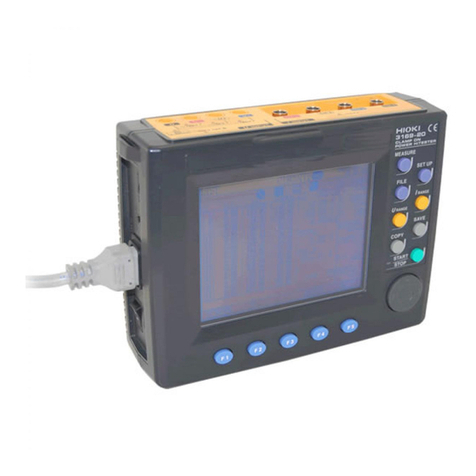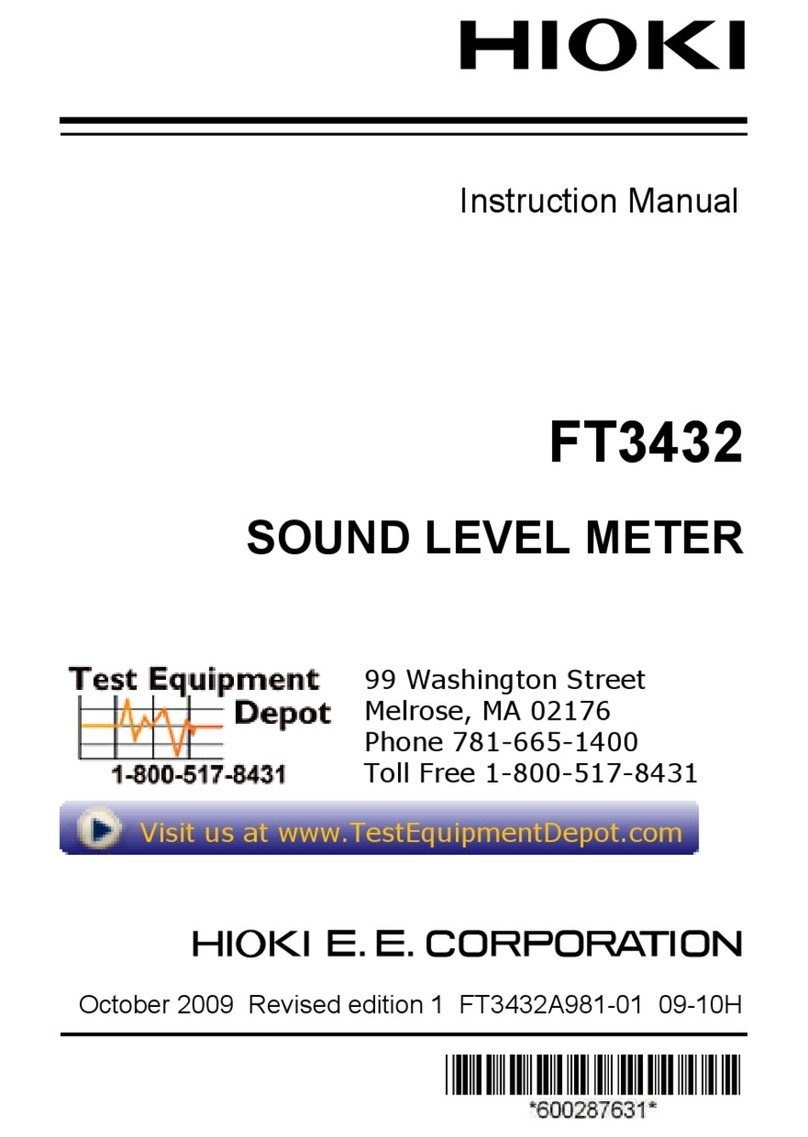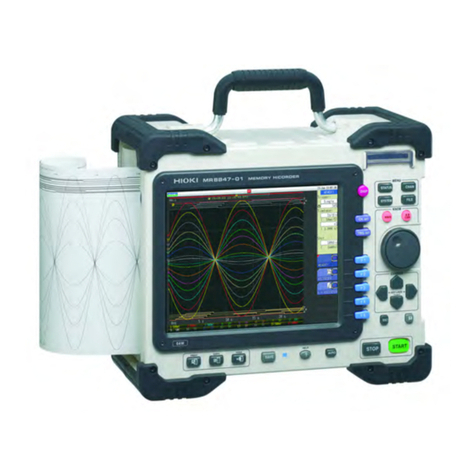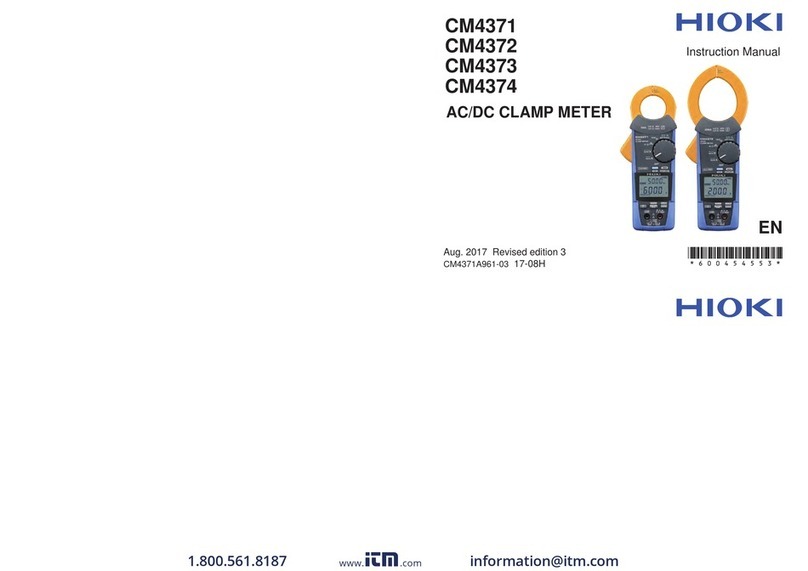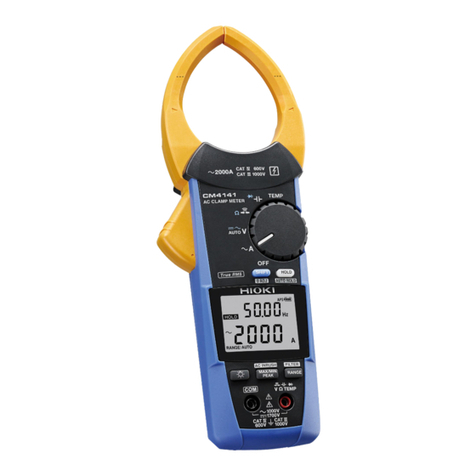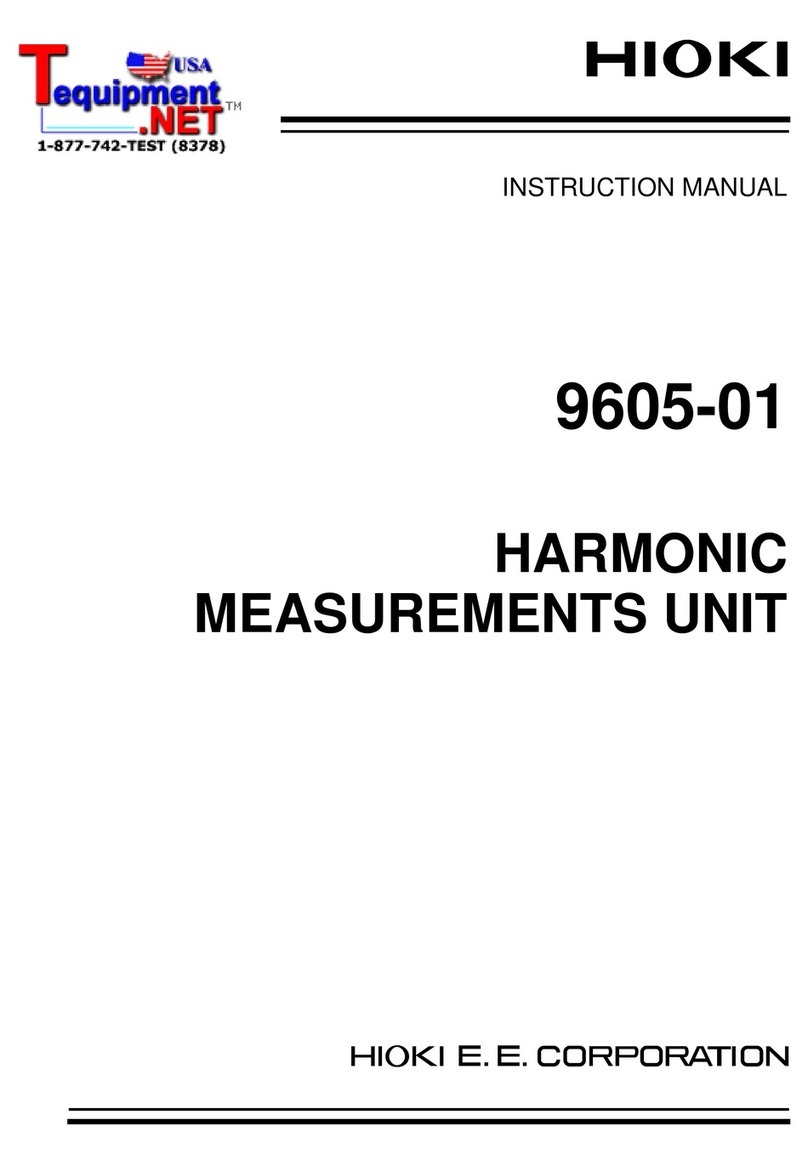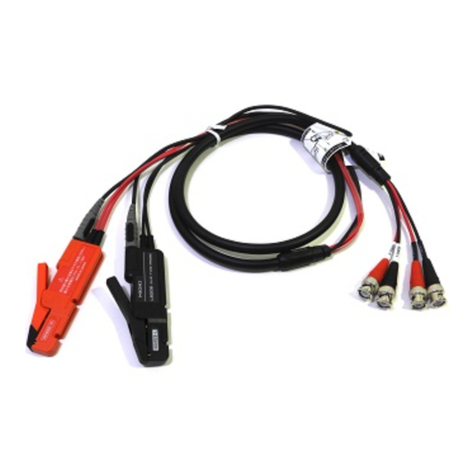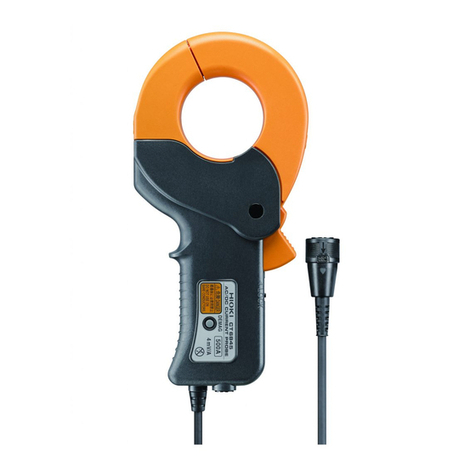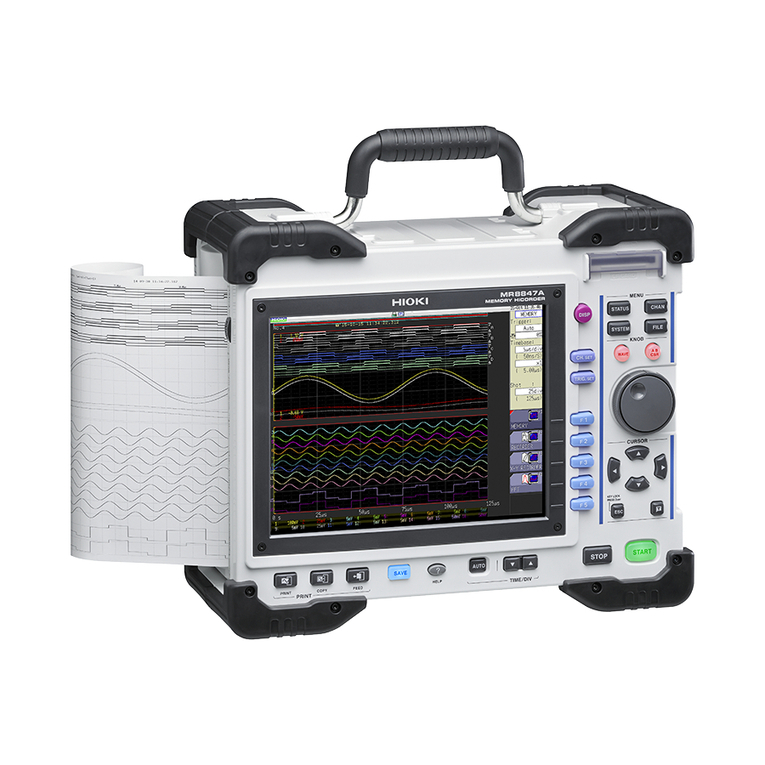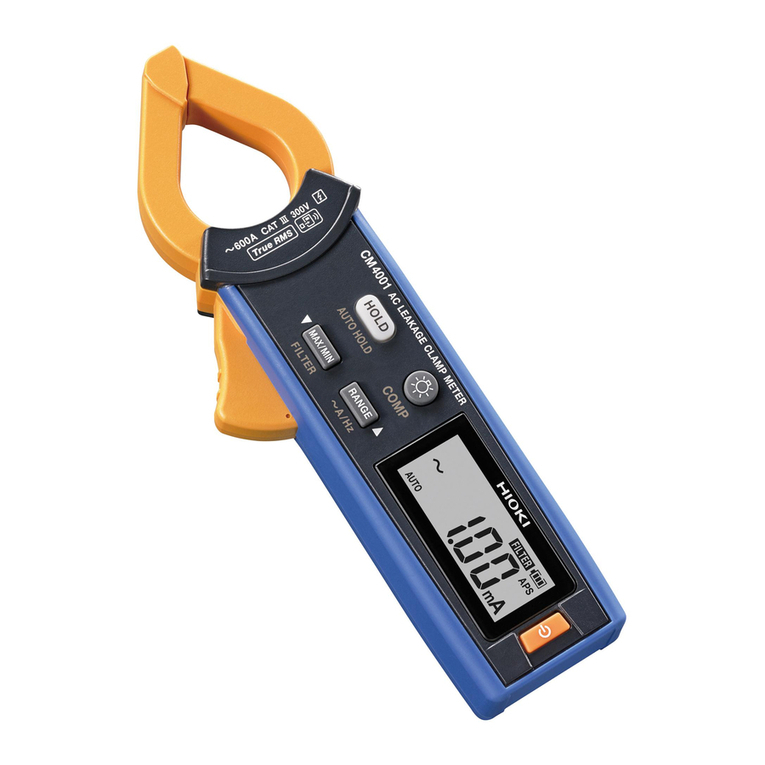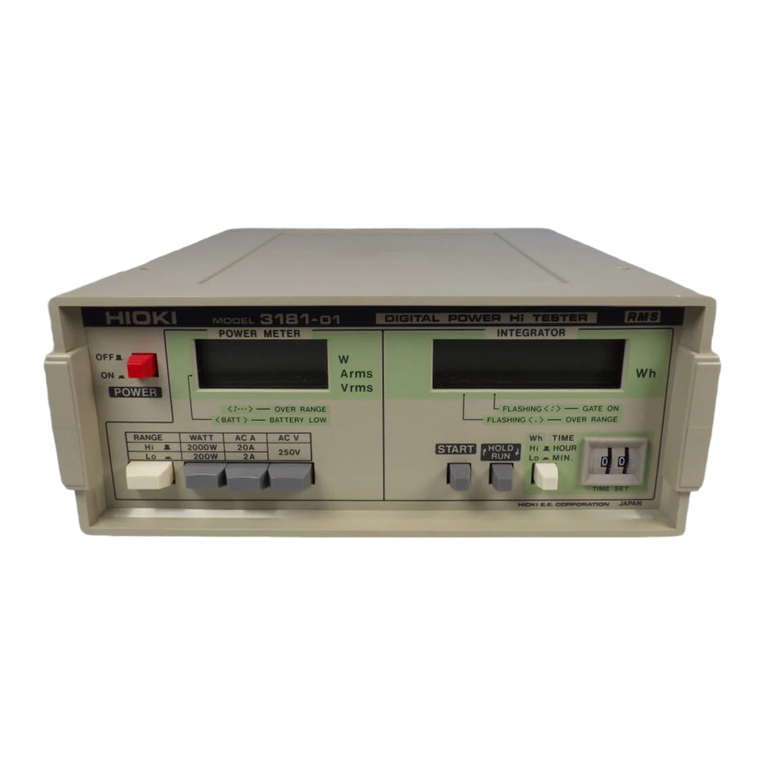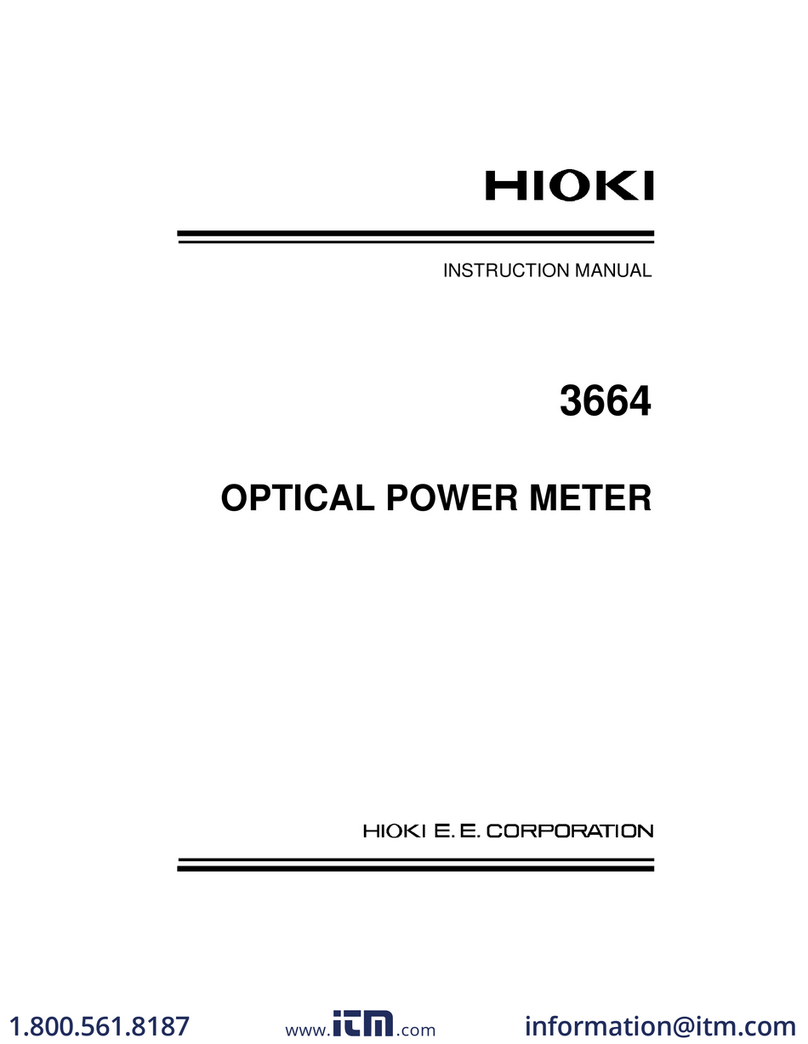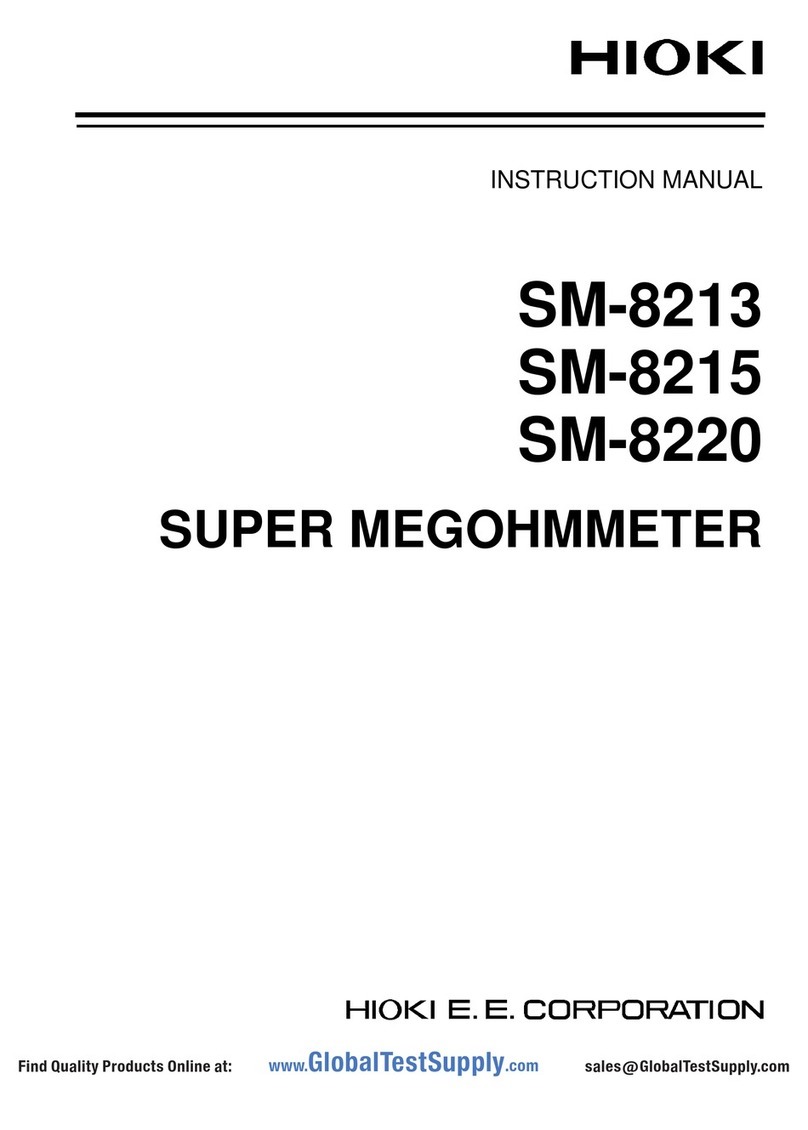
i
4 Customization
of Measurement
Conditions 37
4.1 Setting the Measurement
Starting Conditions (Trigger
Functions)....................................... 37
Setting the trigger .......................................37
Inputting the external trigger .......................38
4.2 Starting the Measurement After
the Response of the Measuring
Object is Stable (Sample Delay
Function)......................................... 38
4.3 Maintaining Voltage
Measurement Accuracy (Self-
Calibration Function) ..................... 41
4.4 Stabilizing the Measurement
Values (Average Function) ............ 42
4.5 Compensating the Potential
Slope Due to Electric Discharge
(Slope Correction Function).......... 43
4.6 Preventing the Overcharge due
to Measurement Signal (Voltage
Limit Function) ............................... 45
4.7 Prevents Charging and
Discharging due to the
Measurement Signal
(Measurement Signal Zero
Cross Stop Function)..................... 47
5 Judging Measurement
Results (Comparator
Function) 49
5.1 Turning the Comparator
Function ON and OFF .................... 50
5.2 Setting the Upper and Lower
Limit Value ...................................... 51
5.3 Voltage is Judged with the
Absolute Value ............................... 54
5.4 Checking the Judgment with
Sound .............................................. 55
5.5 Checking the Judgment Result .... 56
Contents
Introduction................................................ 1
Registered trademark ...................................1
Verifying Package Contents ..................... 1
Safety Information..................................... 3
Operating Precautions.............................. 6
1 Overview 11
1.1 Product Overview and Features ....11
1.2 Names and Functions of Parts ..... 12
1.3 ScreenCongurationand
Operation ........................................ 15
Measurement screen ..................................15
Settings screen ...........................................15
1.4 Measurement Flow......................... 16
2 Preparation 17
2.1 Connecting the Power Cord.......... 17
2.2 Connecting the Measurement
Probe and Temperature Sensor
(Optional) ........................................ 18
Connect the four-terminal cable to the
instrument ...................................................18
Connect the temperature sensor to the
instrument ...................................................18
2.3 Turning the Power ON or OFF....... 19
2.4 Inspection Before Use ................... 19
3 Basic Measurement 21
3.1 Selecting the Measurement
Functions ........................................ 21
3.2 Selecting the Measurement Range22
3.3 Setting the Measurement Speed... 23
3.4 Setting the Measurement
Frequency ....................................... 24
When the measurement time is long
(Display of the Progress Bar)......................25
3.5 Performing the Zero Adjustment .. 26
Performing the zero adjustment..................26
Connection when performing the zero
adjustment ..................................................29
3.6 Checking the Measurement
Results ............................................ 30
Detecting the measurement abnormality ....30
Temperature measurement indication ........32
Overrange indication...................................32
3.7 Basic Measurement Examples...... 33
BT4560A981-01
10
9
8
7
6
5
4
3
2
1
Appx. Index
